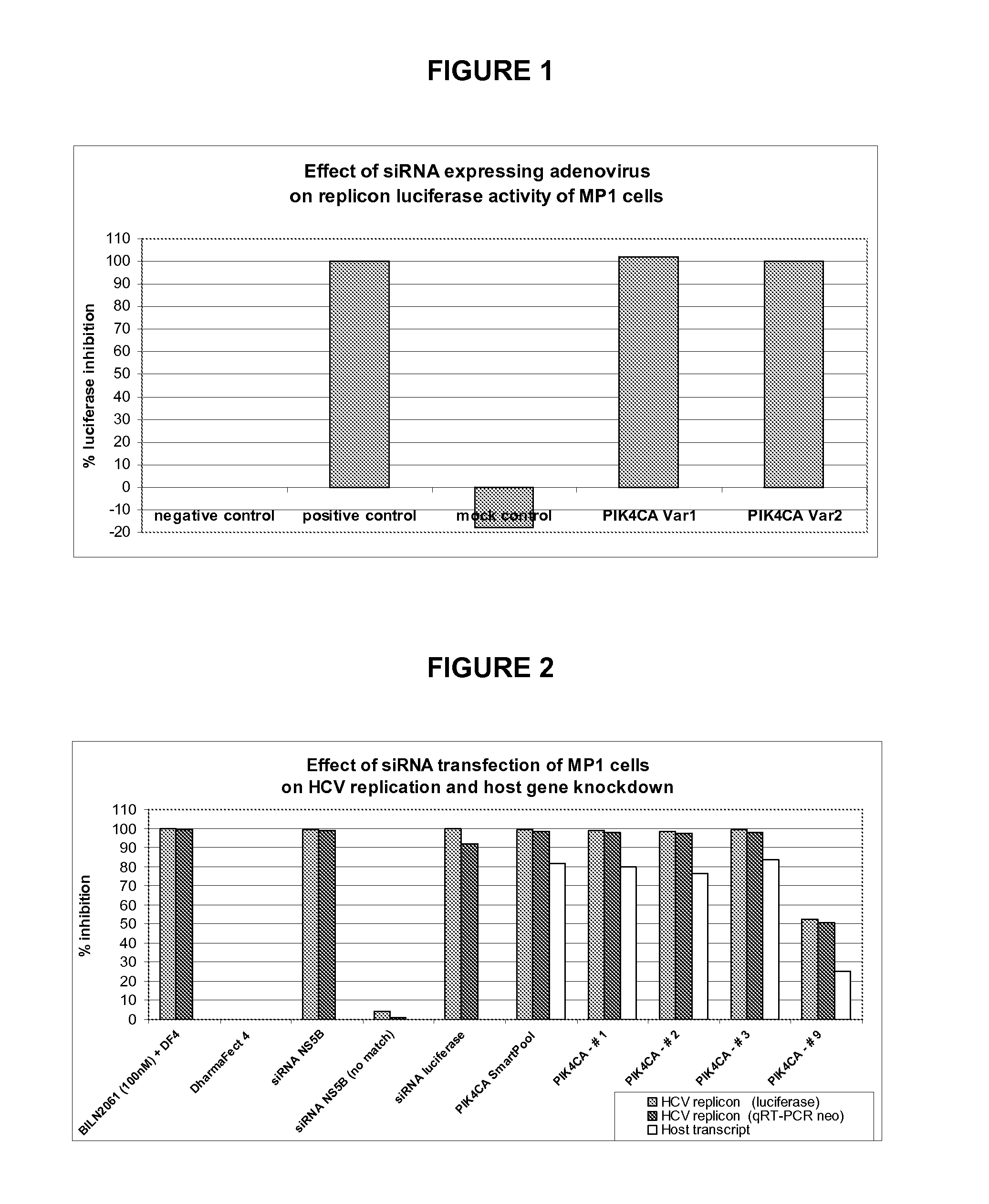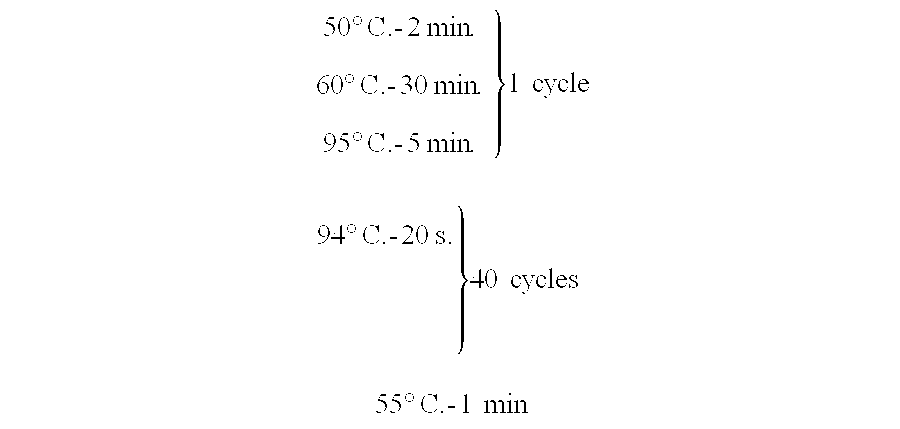Method for Inhibiting Hepatitis C Virus Replication
- Summary
- Abstract
- Description
- Claims
- Application Information
AI Technical Summary
Benefits of technology
Problems solved by technology
Method used
Image
Examples
specific embodiments
[0033] Method of Modulating Replication
[0034] One aspect of the present invention provides a method for modulating the replication of hepatitis C virus in a cell, comprising modulating the function of phosphatidylinositol-4-kinase (PI4K) in the cell.
[0035] In one embodiment of the present invention, the phosphatidylinositol-4-kinase is PIK4CA or functional variants thereof. In another embodiment of the present invention, the phosphatidylinositol-4-kinase is PIK4CA Var. 1 [SEQ ID 2], with the encoding cDNA sequence for PIK4CA Var 1 provided in SEQ ID NO: 1, or PIK4CA Var. 2 [SEQ ID 4], with the encoding cDNA sequence for PIK4CA Var 2 provided in SEQ ID NO: 3.
[0036] It is contemplated that the modulation in function of the PI4K may occur in any of the ways known to the skilled in the art for modulating the function of a cellular component.
[0037] It is well known in the art that the function of a cellular component may be affected, so as to increase or decrease the function of the ...
example 1
Measurement of HCV Subgenomic RNA Replication Using Luciferase Reporter or RT-PCR RNA Quantification
[0076] The HCV subgenomic replicon system is a well established cell culture model that mimics intracellular HCV genome RNA replication. The HCV RNA is engineered in a bi-cistronic arrangement to encode both a luciferase reporter and neomycin selectable marker in the first cistron, where as the second cistron encodes the HCV non-structural proteins from NS2 to NS5B, inclusively. Luciferase levels are directly proportional to the level of HCV subgenomic RNA and assays quantifying both luciferase or HCV RNA in the MP-1 cells have been described in (Lohmann et al., Science (1999) 285: 110-113; Vroljik et al., J. Virol. Methods (2003) 110:201-209) and WO2005 / 028501.
[0077] Luciferase Reporter
[0078] The “Luciferase assay system” from Promega is used to measure firefly luciferase (reporter) expression in the MP1 cell line in a 96-well format with the following protocol: [0079] Prepare the...
example 2
Inhibition of HCV Replicons in MP-1 Cells with Adenovirus Expressing PIK4CA Specific Small Hairpin RNA (shRNA)
[0101] The MP1 cell line, as described in example 1 above, is a human hepatoma Huh-7 cell line harboring HCV subgenomic RNA replicon with a luciferase reporter. The cells are maintained in DMEM High glucose (Wisent Inc.) supplemented with 10% fetal bovine serum (FBS; HyClone) containing neomycin (250 μg / ml) (Geneticin; Invitrogen). These cells are used in a screen of an adenoviral expressing small hairpin RNA (shRNA) library that targets more than 4000 different human host transcripts ( Arts et al., “Adenoviral vectors expressing siRNAs for discovery and validation of gene function”Genome Res. (2003) 13(10): 2325-2332). The screen includes a positive control adenovirus, termed Pos (v2), expressing an shRNA with the sequence 5′-CACTGAGACACCAATTGAC-3′ [SEQ ID NO. 8] that targets a segment in the NS5B region of the HCV replicon RNA and effectively reduces HCV RNA levels in the...
PUM
| Property | Measurement | Unit |
|---|---|---|
| Concentration | aaaaa | aaaaa |
| Catalytic activity | aaaaa | aaaaa |
Abstract
Description
Claims
Application Information
 Login to View More
Login to View More - R&D
- Intellectual Property
- Life Sciences
- Materials
- Tech Scout
- Unparalleled Data Quality
- Higher Quality Content
- 60% Fewer Hallucinations
Browse by: Latest US Patents, China's latest patents, Technical Efficacy Thesaurus, Application Domain, Technology Topic, Popular Technical Reports.
© 2025 PatSnap. All rights reserved.Legal|Privacy policy|Modern Slavery Act Transparency Statement|Sitemap|About US| Contact US: help@patsnap.com



